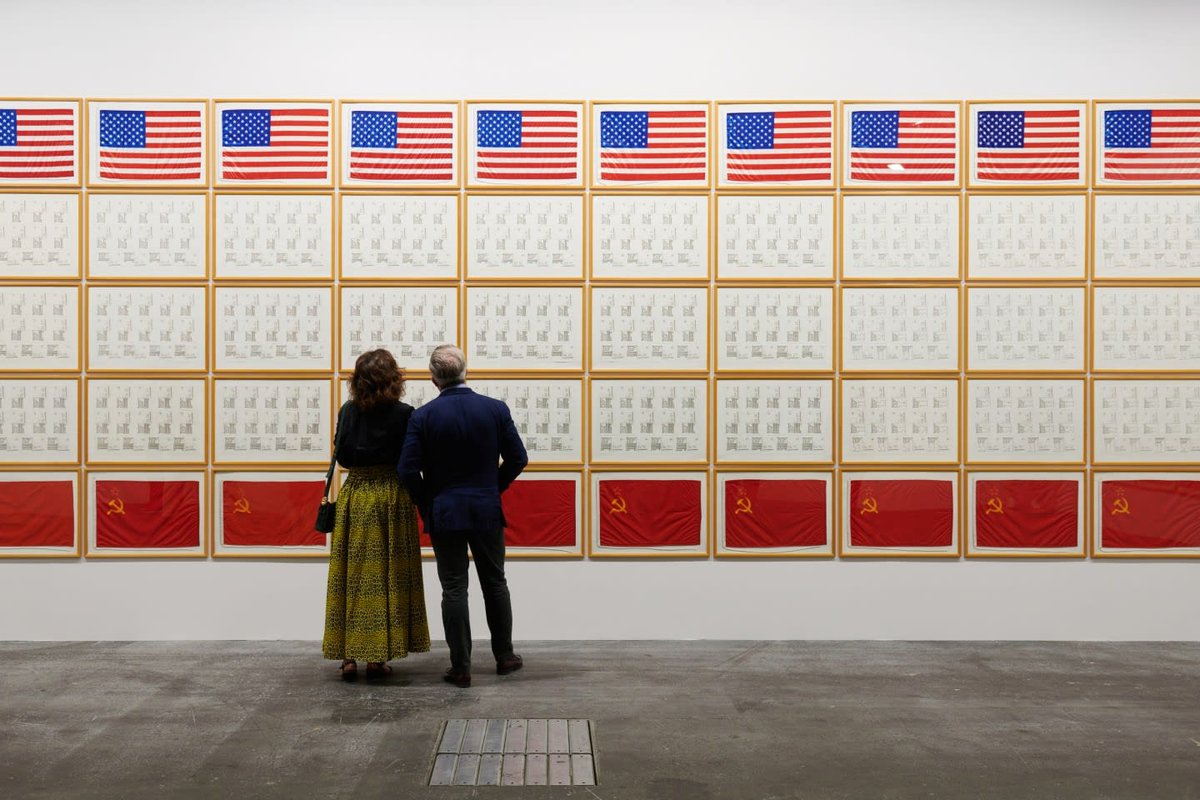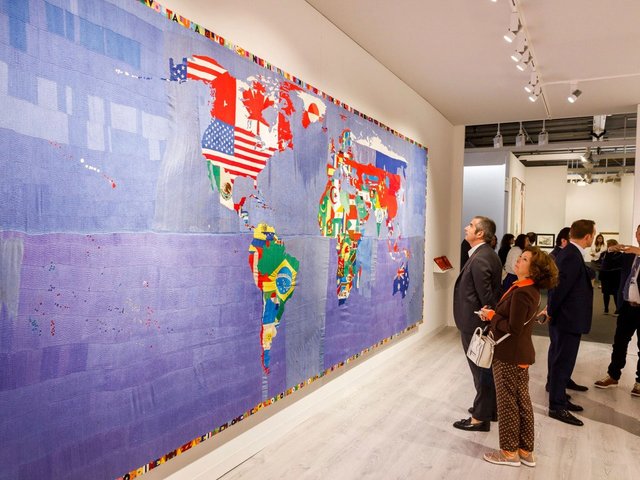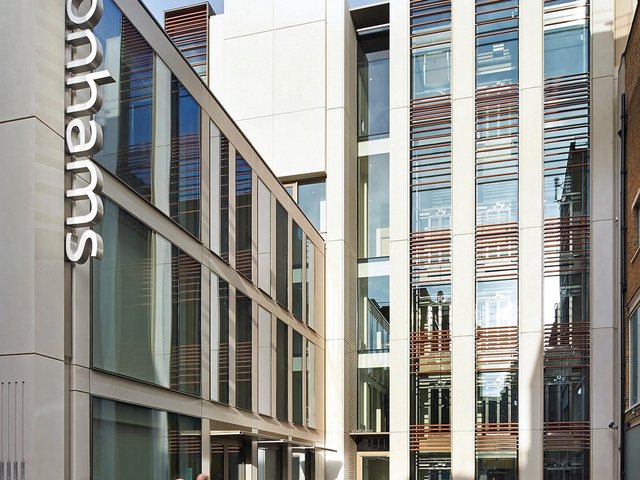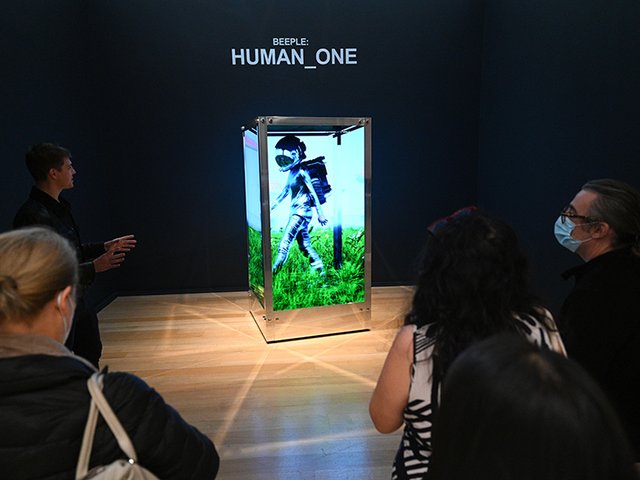The art market can often seem out of step with the realities of war, inflation, recession and other political and economic crises, but some cracks began to appear in 2022, according the latest Art Market Report published by Art Basel and UBS today. Global sales increased just 3% to an estimated $67.8bn—largely thanks to a handful of dealers at the top end making more multi-million-dollar sales. However, some segments—notably the auction market—contracted slightly last year.
By the end of 2022 particularly, the market appeared “overstimulated and began to cool, with reports of more subdued bidding and buying at events”, writes Clare McAndrew, the author of the report and founder of the consultancy Arts Economics. She paints a divergent picture of an increasingly top-heavy market, with the US and UK posting positive results but China’s performance marred by tight zero-covid policies. Overall, growth was “more muted […] than anticipated”, McAndrew says.
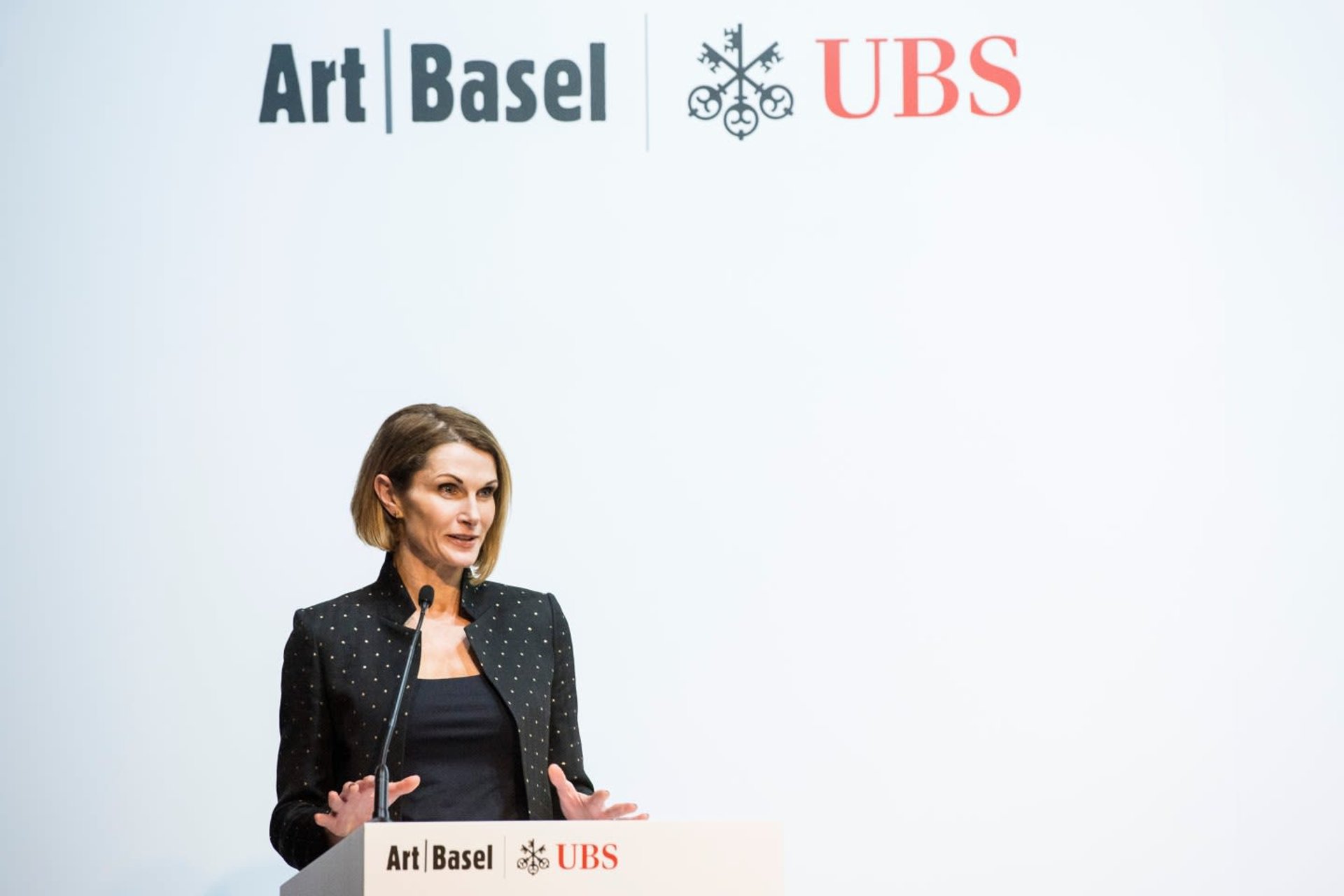
Clare McAndrew is author of the UBS/Art Basel Art Market Report
Courtesy of Art Basel/UBS
Nonetheless, the market’s rebound has exceeded its decline. Sales in 2022 were greater than before the pandemic and represent the second-highest point achieved in the market to date, with values coming in just below the peak of 2014.
The US held its top spot in the global ranks, with its share of sales increasing by 2% year-on-year to 45%. Driven by a major uplift at the high end of the auction sector, values increased 8% to $30.2 bn, the highest level in the US to date. China (including Mainland China and Hong Kong) had a significantly worse year in 2022. Here sales declined by 14% to $11.2bn, their lowest level since 2009. As a result, China’s share decreased (by 3%) to 17%, pushing it back into third position.
China’s loss was the UK’s gain. Back in second place with an 18% share of sales (up 1% on last year), the UK maintained its momentum, with a 5% rise in value to $11.9bn. McAndrew says she had been “braced” for poorer results with Brexit still a thorn in the side of the UK trade—the value of the market in the UK has fallen by 7% between 2013 and 2022—but while European trade has been damaged, the report found that the UK was the most international of markets, with 60% of dealer sales made to overseas buyers.
Auction sales fall
On the face of it, 2022 appeared to be a bumper year for auction houses, with the first sale to surpass $1bn. There was plenty more marketing hype when the auction houses posted their end of year results, which in Sotheby’s case included real estate and classic car auctions, somewhat skewing the picture.
But all was not as it seemed. According to the report, auction sales in fact fell last year, dropping 2% to $30.6bn across both public and private sales (though this was up 11% on 2019’s pre-pandemic figure). This was largely due to a poor performing Chinese auction market, which saw cancellations in Shanghai in spring and further lockdowns stalling important autumn sales on the Mainland, contributing to a 22% drop in 2022. Overall, global auction sales accounted for 45% of the market in 2022, down 2%.
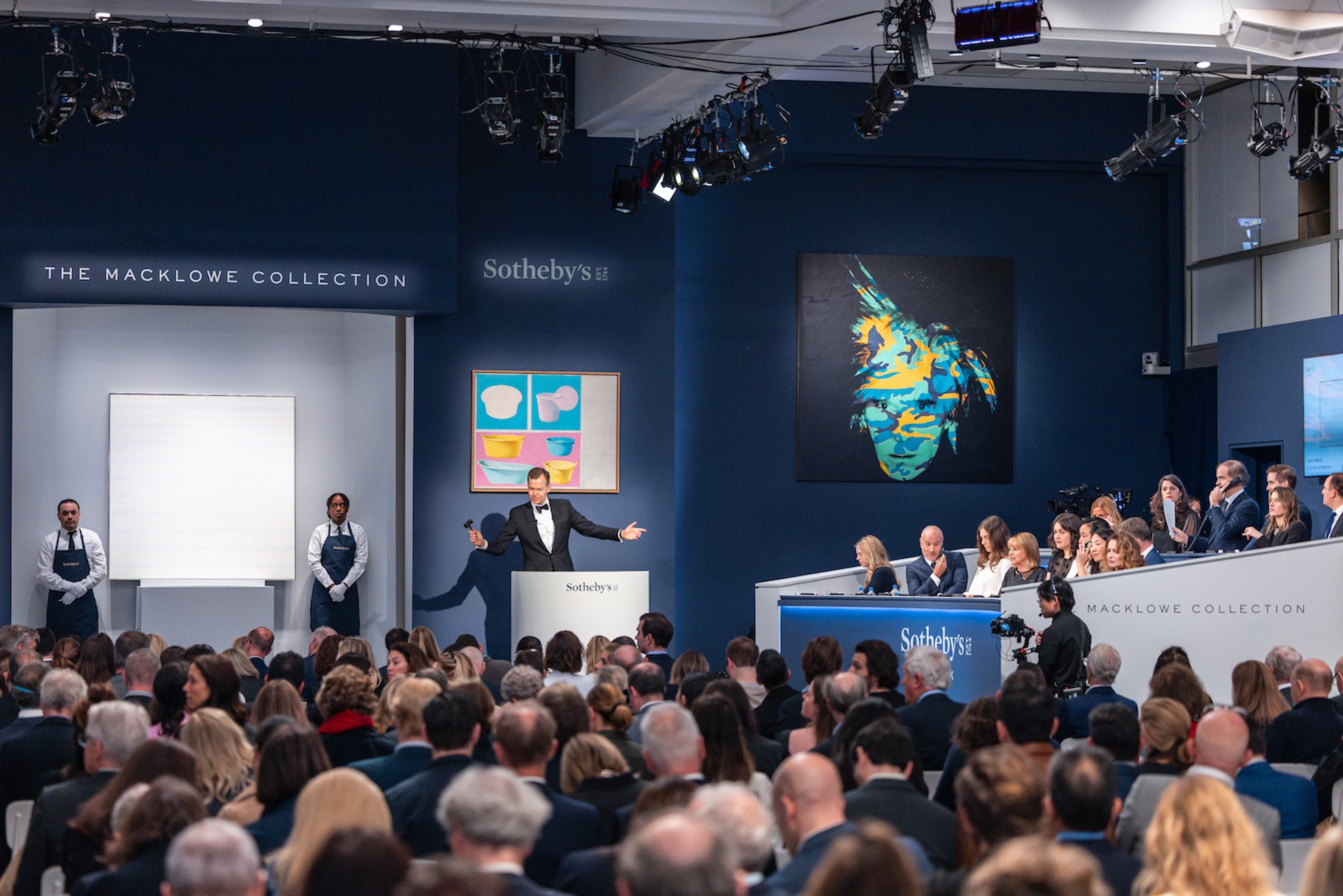
The Macklowe Collection sale at Sotheby's in 2022
Courtesy of Sotheby's
The air is thin at the top of the market, but enough oxygen is circulating to keep the big-ticket items turning over. In the auction sector, the high-end performed most strongly in 2022, with works priced at more than $10m being the only segment to increase in value (by 12%). As is common in times of economic instability, wealthy buyers tend to pivot to the most established artists and works they perceive to be lower risk.
The US regained its leading position in 2022 with 37% of sales. The majority of the highest-priced works of art were sold in New York during the year, including 41 of the top 50 fine art lots. China fell back to second place (26%, down by 7%) and the UK was the third-largest auction market with a stable share of 13%, just ahead of France at 9%.
While online sales at Christie’s, Sotheby’s and Phillips accounted for 7% of total public auction sales—down by 4% year-on-year—the importance of digital technology in supporting sales has continued to expand. Sotheby’s reports that 91% of bids placed at their auctions in 2022 were online (from just 44% in 2017 and only 18% in 2012). Similarly, at Christie’s, 75% of bids were online, compared with 45% in 2018.
The report also highlights some potential problems ahead for the auction sector, which may have already contributed to its falling share in global sales. For example, financial tools such as guarantees are becoming more convoluted; last May, New York City abolished rules introduced 30 years ago to regulate the auction industry, which experts think could muddy the water.
As one anonymous dealer says in the report: “We have seen a resurgence of investment schemes and the use of inappropriate financial tools in the art market again in the last two years. When these things start to proliferate, it’s always a sign of trouble ahead.”
Polarisation among dealers
The dealer sector grew by 7% to $37.2bn in 2022, though growth and profitability were generally only observed at the very top end. Those with the highest turnovers of more than $10m saw some of the largest increases in average sales values, at 19%. According to dealers operating in this segment, buying has been “strong but thin at the top”. They note that many of their wealthiest buyers had expressed a preference to buy privately in order to engage in a more “thought-through transaction” and retain the ability to negotiate with more opacity.
As one dealer puts it: “We have found the top end alive and well and there seems to be a better appetite to buy privately this year. While this used to be about privacy, now we find collectors at this level want to avoid being manipulated by guarantees and having third parties to a transaction and prefer the more straightforward approach of a private sale.”
Some of the uplift in sales in 2022 was due to an increased volume of transactions. The median number of works sold over the year rose from 65 to 75. The largest dealers, with turnovers of more than $10m, sold a median of 225 works during 2022, versus 15 for those with turnovers of below $250,000.
The smallest businesses struggled with more cautious buyers, rocketing exhibiting costs and stagnating sales, leading to bigger discounts. Those with turnovers of less than $250,000 reported a decline of 3% in sales. Dealers in this segment noted that, unlike buyers at the top end who are perhaps more impervious to general economic conditions, their buyers had tighter budgets and were generally more cost-conscious in 2022.
The growing costs of the art business also put a significant dent in dealers’ profits. The report notes that shipping in particular has shot up, with some dealers putting this at 40% of expenditure, up from 20% in 2021.
Art fairs have also become a bone of contention, with some dealers noting that in 2022 they spent a minimum of between 15% and 20% more than in pre-pandemic times on art fairs and their related costs. As one puts it: “Post-pandemic, the costs of participating in art fairs has skyrocketed and it is becoming no longer economically viable for us to exhibit as they don’t bring in enough business to justify the high cost of a booth.”
Another says the art fair model is being tested “partly through the pandemic-induced changes of habit and buying preferences, but also due to challenges surrounding transport and travel and the general rise in costs”.
As for wider trends, there appears to be a shift in power towards artists who are working more directly with collectors, in no small part driven by advances in technology and a greater focus on social media. When primary market dealers were asked about their level of concern regarding artists bypassing their galleries, 35% said they were “extremely or moderately” concerned and only 20% were not concerned. Almost 40% of primary market dealers predicted an increase in direct selling by artists in the next year.
As a result, McAndrew notes, some dealers are “feeling pressure on their programmes both from the top down from large top-tier galleries and the risks of artists being poached, and the bottom up from the artists themselves as their practices mature”.
Wet painting market dries out
One of the biggest trends over the past couple of years has been the mushrooming market for ultra-contemporary or "red-chip" artists. In large part driven by a frenzied auction market, this trend now appears to be in reverse. In 2021, contemporary art (created by artists born after 1945) and works made in the past 20 years both doubled in value at auction, largely thanks to strong sales of ultra-contemporary artists. However, in 2022, the older segment of post-war art was more successful, with values up by 3%, versus declines of 26% for contemporary art and 17% for works created in the past 20 years.
When surveyed, some dealers commented that they felt certain parts of the primary market had become “overinflated” in 2021, and sales had not kept up at the same pace in 2022, with concerns that there could be a “rocky road ahead for some artists”. Comments were particularly directed at so-called “living celebrity artists” whose prices are already at the $1m-plus level relatively early in their careers.
Some dealers noted how “auction visibility was replacing museum acquisitions as a marketing technique for artists” with works going from artists’ studios to auction in a very rapid turnaround, while others blamed an influx of “too many new galleries that have no integrity or knowledge of the business”, who are pushing up prices.
Gender parity—when will it come?
Despite continued lip service to gender equity, the representation of female artists remains persistently lower than their male counterparts. Price parity has also been slow to evolve. According to the report, the share of female artists represented by galleries was 39%, up from 37% in 2021. In the primary market alone, progress appears to have stalled in the past two years, with the share of female artists now at 42%, marginally down on the 44% achieved in 2019.


